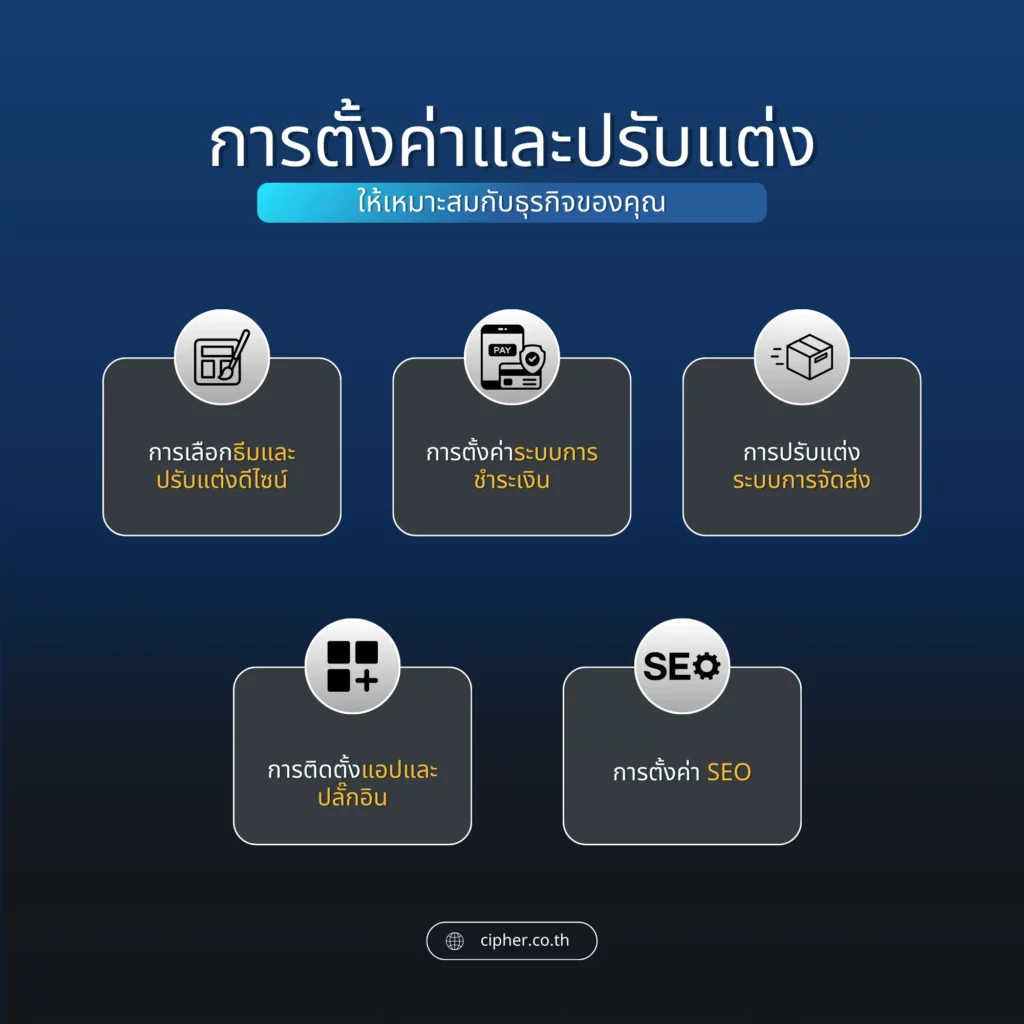Table of Contents
How to Install and Deploy Shopify Plus for E-Commerce Success
Shopify Plus is one of the leading options for growing and large e-commerce businesses. Good planning enables smooth deployment and deployment of Shopify Plus and improves business productivity. Effective deployment and implementation requires knowledge and planning. This article will guide you on how to install Shopify Plus. And customized for the business so that E-Commerce owners can take full advantage of this platform.
Shopify Plus Installation and Deployment Planning
Planning and implementation of the Shopify Plus system requires a thorough and systematic process for your business to work effectively and increase growth opportunities. The main steps are as follows:

understand the needs of the business
Before implementing Shopify Plus, business owners need to clearly understand their business needs, including business goals such as increasing sales, expanding markets, or improving their customer experience. Understanding this allows business owners to plan for installation and package selection of Shopify Implementation Service. That is the best fit for the business model and the most efficient implementation. The Shopify Plus feature can be selected to suit the use or customization of the store.
Site Structure Planning
Business owners need a plan to design the site’s structure to suit their business model, product image and usage patterns, such as the front page or display page, to select a theme that suits the brand and customize it to fit the business’s characteristics.
In addition, product and content information should be provided. Product information, price details and high-quality photos should be provided to create interesting content including blogs, articles and videos to help boost sales.
Assign Teams and Roles
The Shopify Plus deployment requires multi-party collaboration. Team and role should be clearly defined so that each person understands their role and responsibilities in the deployment process, including project managers, web developers, UX/UI designers, SEO experts, marketing and sales teams should be trained to efficiently use the Shopify Plus system and features.
Create Timeline and Targets
Creating clear timelines is important. Projects should be divided into sub-steps and goals for each step. Having clear timelines will help teams work efficiently and achieve their goals, such as:
- Analysis and planning (1-2 weeks)
- Design and Development (4-6 weeks)
- Defective testing and correction (2-3 weeks)
- Staff Training (1-2 weeks)
- Launch and follow-up (1-2 weeks)
Monitoring and Improvement
Measure the performance of the website, such as sales, website visits and logistics efficiency, and use the information or results to continuously improve and develop the website to meet the needs of the market and customers.
Team training for using Shopify Plus

draw up a training plan
Team training is an important step in deploying Shopify Plus. A comprehensive training plan should be established, such as the Shopify Plus overview, inventory management, order processing, customer management or reporting and analysis system usage.
Select the appropriate training method.
There are several ways to train a team. Choose the right way for the team or business model, such as one-on-one training, online training, video tutorials, or user manual. Combining different methods will help make training more efficient.
Monitoring and evaluating training outcomes
After the training, you should follow-up and evaluate such as conducting a comprehension test for the team and listening to suggestions and problems found. The evaluation will help you determine if the team is available for Shopify Plus and where additional training is required.
Setting up and customizing Shopify Plus for your business

Theme Selection and Design Customization
Choosing the right theme is an important starting point. Shopify Plus has many themes to choose from, or you can create your own theme. Good design will give customers a first impression, such as brand or business image, choosing a theme that supports the features they need, or customizing the color, logo and font to match the brand or business image.
Payment system settings
Shopify Plus supports a wide range of payment options. It should be tailored for customers such as credit/debit cards, PayPal, Apple Pay, Google Pay or bank transfer. A variety of payment options will increase sales opportunities because they meet a wide range of customer needs and convenience options, allowing them to make faster decisions.
Configuring Delivery Systems
Efficient delivery systems are important. Shopify Plus allows business owners to set up customized delivery zones, rate settings, connections to shipping companies, and free shipping conditions. The flexible delivery system will increase customer satisfaction.
Installing Apps and Plug-ins
Shopify Plus has a broad range of apps and plug-ins that enhance functionality, such as inventory management features, email marketing tools, product review systems, and analytics tools. If business owners understand, they can choose the app or plug-in that is needed to suit the business.
SEO Settings
Making SEO is important for enhancing visibility into the Service Engine on Google, such as customizing URL to be SEO friendly, adding Meta Title and Meta Description, or using the appropriate keyword in content. Of course, making these good SEOs makes it easier for customers to find stores.
Testing and Launch
Before full activation, the following key steps are required:
Test all functions before launch.
Before launching the store, all functions should be tested thoroughly, such as testing orders, checking displays on devices, testing payment systems, and checking the accuracy of product information. These detailed tests will reduce problems that may arise after launch.
plan an opening
Store launches should be carefully planned, selected at the right date and time, prepared marketing campaigns for launch, informed existing customers of changes, and prepared customer support teams to make a good first impression on customers.
Continuous monitoring and improvement
After the launch, we should closely monitor the results of our operations in terms of analysis of usage data, and listen to suggestions from customers to quickly solve problems and improve online store performance in future use. Continuous improvements will help businesses grow and succeed in the long run.
Conclusion
Effective installation and deployment of Shopify Plus is a key tool to make e-commerce a success. If businesses have good planning, team training and customization of Shopify Plus will help you make the most of your Shopify Plus experience. Keep in mind that continuous development and improvement are important in the ever-changing world of e-commerce.
For E-Commerce businesses looking to enhance their business with Shopify Plus, learn more about how Shopify Plus and seek advice from experienced professionals to enable your business to grow and succeed.





